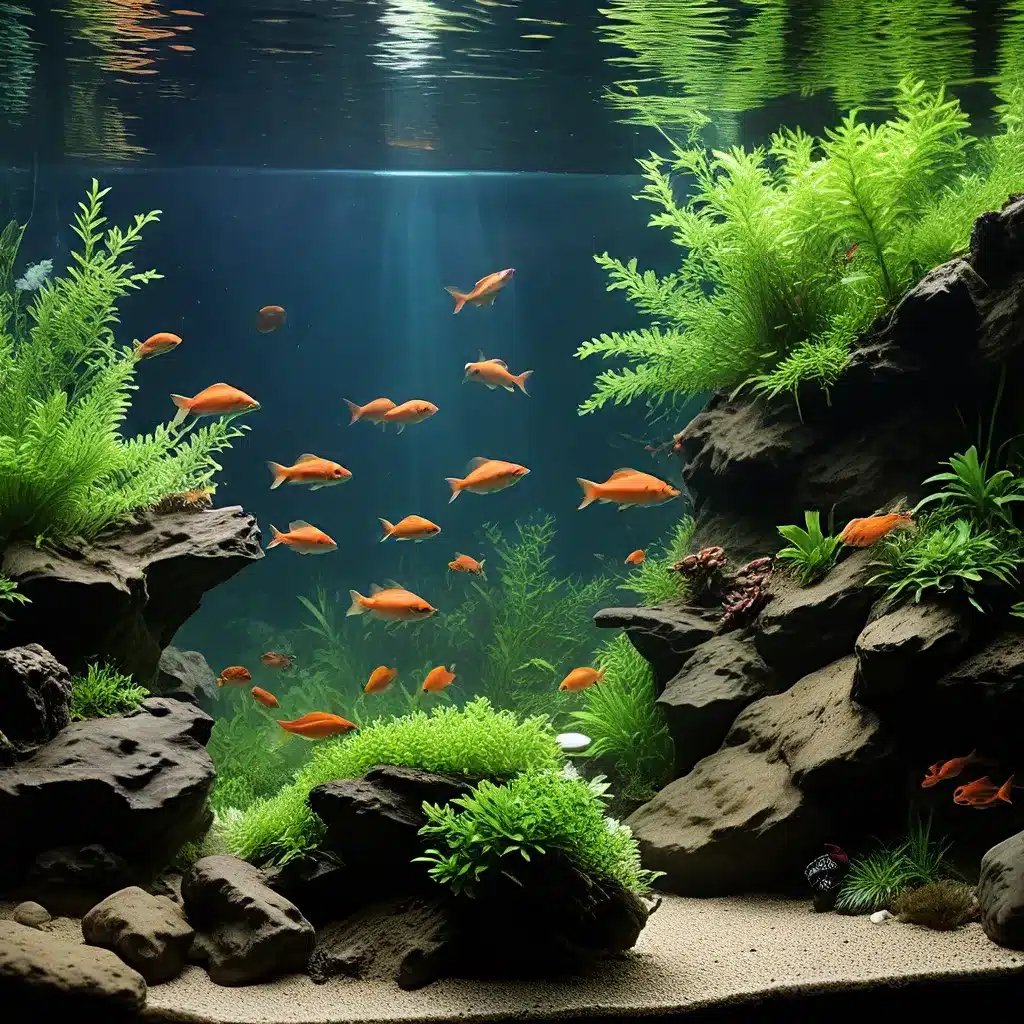
Establishing a Thriving Ecosystem
Maintaining a healthy and harmonious aquarium community is the cornerstone of successful fish-keeping. By understanding the unique needs and behaviors of various species, aquarists can create an environment that fosters vibrant life and captivating underwater landscapes. At the heart of this endeavor lies the principle of species compatibility – the art of selecting compatible fish that can coexist peacefully and contribute to the overall balance of the aquarium.
One of the key factors to consider when building a thriving fish community is the concept of territoriality. Different species have varying degrees of territorial behavior, and it’s essential to pair compatible inhabitants that can maintain their own spaces without engaging in constant conflicts. For example, peaceful community fish like tetras, rasboras, and danios tend to do well in the presence of other calm, schooling species, while more aggressive cichlids or barbs may require ample swimming room and hiding spots to avoid stress and aggressive outbursts.
Prioritizing Water Quality and Filtration
Alongside species compatibility, water quality is a crucial element in sustaining a harmonious aquarium ecosystem. Proper filtration, regular maintenance, and vigilant monitoring of water parameters are vital to ensuring the long-term health and well-being of your fish. Investing in a reliable filtration system that can efficiently remove waste, debris, and excess nutrients is a fundamental step in creating a thriving underwater haven.
When it comes to filtration, there are several advanced techniques that aquarists can leverage to enhance water quality and support diverse fish communities. Canister filters, for instance, offer superior mechanical and biological filtration capabilities, capable of handling the demands of larger aquariums or heavily stocked tanks. Additionally, the incorporation of protein skimmers and ozonizers can further improve water quality by removing dissolved organic compounds and providing enhanced aeration.
Aquascaping for Harmony and Aesthetics
Beyond the practical aspects of water quality and species compatibility, the art of aquascaping plays a crucial role in establishing a visually captivating and harmonious aquarium environment. Thoughtful aquascaping can not only enhance the aesthetic appeal of your underwater haven but also provide essential hiding spots, territorial boundaries, and natural foraging opportunities for your fish.
When designing your aquascape, consider incorporating a variety of live plants, driftwood, and strategically placed rocks to create diverse microclimates and territorial zones. This approach can help mitigate potential conflicts between species by offering ample hiding spaces and distinct areas for different fish to thrive. Additionally, the incorporation of live aquarium plants can contribute to improved water quality, as they actively consume excess nutrients and provide vital oxygen to the ecosystem.
Choosing the Right Fish and Stocking Levels
Selecting the appropriate fish species and maintaining a balanced stocking level are crucial elements in cultivating a harmonious aquarium community. When introducing new inhabitants, it’s essential to consider the size, temperament, and environmental requirements of each species to ensure a peaceful coexistence.
For instance, pairing smaller, schooling fish like neon tetras or cardinal tetras with larger, more territorial species like angelfish or oscars may lead to stress and potential conflicts. Conversely, combining multiple aggressive or semi-aggressive fish, such as certain cichlid or barb varieties, without providing ample hiding spots and swimming space can also result in aggressive behavior and potential fatalities.
To strike the right balance, it’s recommended to research and understand the specific needs and compatibility of each fish species before making your selections. Additionally, maintaining appropriate stocking levels, based on the size of your aquarium and the overall bioload, can help ensure a harmonious and thriving community.
Acclimating New Fish and Monitoring Behavior
Introducing new fish to an established aquarium requires careful consideration and a methodical approach to ensure a smooth transition and minimize stress for the existing inhabitants. The process of acclimating new fish involves slowly introducing them to the aquarium’s water parameters and environmental conditions, allowing them to adjust gradually and reduce the risk of shock or illness.
Once the new fish have been successfully acclimated, it’s essential to closely monitor their behavior and interactions with the existing community. Observe for any signs of aggression, territorial disputes, or stress, and be prepared to make adjustments to the aquascape or community composition if necessary. Providing adequate hiding spots, water flow, and food resources can help mitigate potential conflicts and promote a harmonious environment.
By prioritizing species compatibility, water quality, aquascaping, and a measured approach to introducing new fish, aquarists can cultivate a vibrant and engaging fish community that not only thrives but also captivates the senses. Ultimately, the key to aquarium harmony lies in understanding the unique needs of each species, creating a balanced ecosystem, and fostering an environment that celebrates the natural beauty and diversity of the underwater world.
Remember, you can always visit King Aquarium for expert advice, high-quality fish, and the necessary equipment to establish and maintain your dream aquarium.

